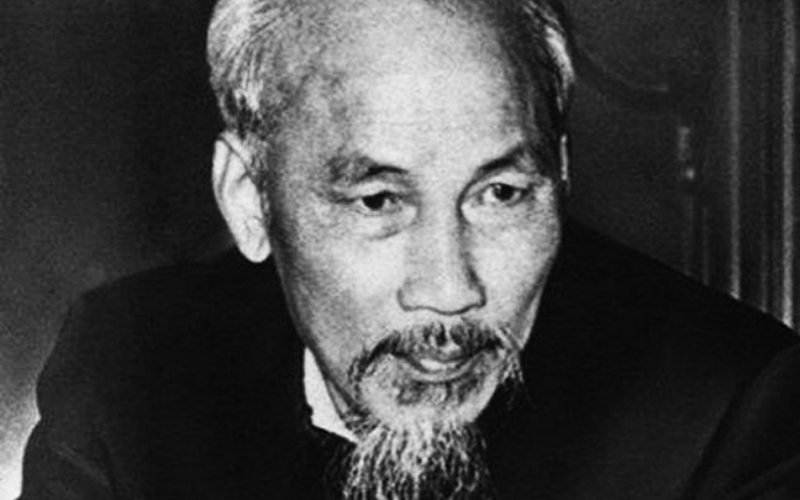Ho Chi Minh
Episode #6 of the course Deadliest dictators in history
Ho Chi Minh (1890–1969), born Nguyen Tat Thanh, was the Communist leader of North Vietnam during the 1960s. His name means “bringer of light,” and he was credited for helping North Vietnam escape the oppressive colonial rule of the French. However, his attempt to unite Vietnam under a communist rule resulted in the deaths of as many as four million people in the 1960s and perhaps millions more in following decades as a result of the Vietnam War.

Ho Chi Minh, 1921.
Credit: http://gallica.bnf.fr/ark:/12148/btv1b9054078w/
At the time of Minh’s birth, Vietnam was a French colony. After attending prestigious schooling, Minh traveled to Europe, China, and the Soviet Union, training with communist leaders like Stalin. Minh was a founding member of the French Communist Party and the Indochina Communist Party. He served as the leader of the Communist International group in Hong Kong and was arrested by British police in 1931. Minh served two years in Chinese prison.

Hồ Chí Minh holding his god-daughter, baby Elizabeth (Babette) Aubrac, and Elizabeth’s mother, Lucie Aubrac in 1946.
In fear of a Japanese invasion of Vietnam during World War II, Minh returned to his homeland and established a communist resistance. When Japan invaded in 1941, Minh led his trained soldiers, the Vietminh, against the Japanese. During the occupation, it is estimated that between 1 and 2 million people in “French Indo-China” died—perhaps as many as half of those due to starvation in a famine from 1944 to 1945.
With Japan’s surrender in 1945, the Vietminh seized power and declared themselves the independent Democratic Republic of Vietnam, with Minh as the president. The French would not relinquish the colony. Minhn led a bloody revolution for eight years to fight for Vietnamese independence. In 1954, a peace treaty was established in the Geneva Accords. Vietnam was divided into North Vietnam and South Vietnam, with the north established as communist under Minh’s rule.

Hồ Chí Minh watching a soccer game in his favourite fashion. His closest comrade – Prime Minister Pham Van Dong is the person sitting next to him on the right corner.
Minh’s severe communist principles and willingness to engage in large-scale conflict over his ideals led North Vietnam to war with South Vietnam in an effort to reunite the country. The United States, fearing the spread of communism in Asia, assisted South Vietnam.
South and North Vietnam combined suffered as many as 4 million deaths—about 250,000 South Vietnamese soldiers killed, and about 1.5 million civilian and North Vietnamese deaths. The US suffered 58,200 casualties of military service members, as inscribed on the US Vietnam War Memorial.
Ho Chi Minh had suffered from ill health for much of his life. He had lived through tuberculosis, dysentery, and numerous other diseases. However, he died from illness in September of 1969. Even with his death, the fighting did not cease. When communist forces captured the capital of South Vietnam in 1975, they renamed it from “Saigon” to “Ho Chi Minh City” in his honor.

Ho Chi Minh with East German Young Pioneers near Berlin.
Writer and historian John Green explains how American officials saw Ho Chi Minh as a tool of communist Russia. Green claims that one of the fundamental misunderstandings of the Vietnam War is that Americans were fighting against communism, while the Vietnamese were fighting for Vietnam.

Hồ Chí Minh meeting a North Vietnamese circus troupe after their performance at the Presidential Palace, Hanoi, 1967.
Credit: http://img.giaoduc.net.vn/w500/Uploaded/doanhuong/2012_09_12/bieudien-xiec-vietnam-conghoa-bandoc-giaoduc-vietnam%20(15).jpg
The people of Vietnam continue to suffer the after-effects of the Vietnam War. Christopher Hitchens detailed in The Vietnam Syndrome (2006) how the chemical weapons (primarily Agent Orange) used to defoliate Vietnam’s jungles became an eco-killer, poisoning the water and land with dioxin that causes birth defects and a long list of physical disabilities for local people. While no definite records exist, it is estimated that more than a million people continue to be affected.

Ho Chi Minh with East German sailors in Stralsund harbour, 1957.
Credit: http://www.bild.bundesarchiv.de/archives/barchpic/search/_1467649042/?search%5Bform%5D%5BSIGNATUR%5D=Bild+183-48579-0009
Recommended book
“Ho Chi Minh: A Life” by William J. Duiker
Share with friends

